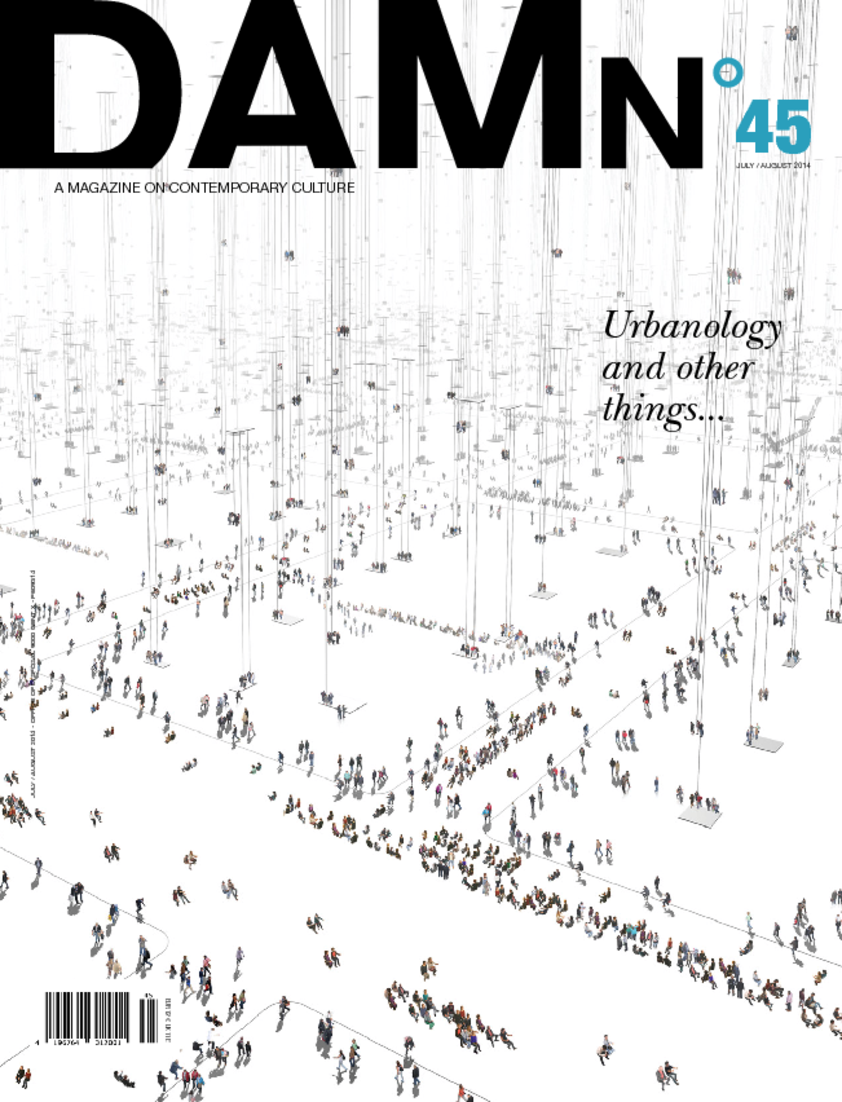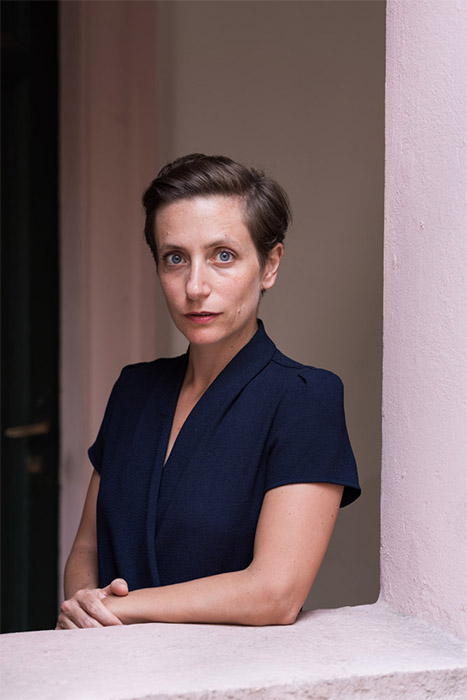Going up?
Max Schwitalla’s connections

Urban Shelf.
This is an architect who would seem to have both his head in the clouds and his feet on the ground. Even before Max Schwitalla’s career began, he was conjuring up images of a new sort of urban layout. Looking upwards and sideways at once, he has developed a fairly solid notion as to how the two orthogonal systems can interrelate while providing the maximum space for people at ground level. Not content with leaving his concept at the research stage, he and his team have devised a plan for the soon-to-be vacated Tegel Airport in Berlin, a test bed for the viability of this wonderfully mad scheme to build platforms in the sky.
To integrate horizontal and vertical urban mobility, this was Max Schwitalla's original purpose when he conceived Upway in 2004, while still studying architecture at ETH University in Zurich. The project was imagined for the city of Moscow, and was a sort of ‘vertical city’ with a rollercoaster-like system of capsules circulating through the metropolis and connecting it to the Moscow metro system.
Schwitalla returned to this idea again in 2012. "After working solely on large-scale developments, mostly in China, I felt I wanted to go back to research. So I started reflecting on urban mobility in a more artistic way and exploring the mobile society through visual art by producing several series of photos, but I soon turned to applied research." At this point, contact with lift-producer Schindler Aufzüge AG was fundamental to the further development of the architect’s Berlin-based interdisciplinary practice, Studio Schwitalla, a small, agile team of people with backgrounds ranging from architecture to neuroscience, which today practices architecture and urban design in a way that blurs the boundaries between the two disciplines.
The first step was imagining the city: in Mobility DNA, Schwitalla visualised urban mobility based on various vehicles and modes of transport: on the one side, clusters of passengers circulating horizontally through the city on foot, in cars, buses, subways and trams; on the other, vertically, in lifts, appearing like a rain shower of people. "Vertical mobility is usually the beginning and end of movement in the city”, Schwitalla notes. "That brought us to the question of how these forms of mobility shape the city. For instance, Los Angeles consists of cars and horizontal movement, while New York has elevators and vertical movement". The reflections on how lifts have influenced urban lifestyle and the development of the city and how the lift shaft is actually ‘shaping’ our cities will be formulated in a publication that comes out next year.
"At this point, we reflected on mobility and urban development more deeply”, Schwitalla explains. "On a purely theoretical level, we reinterpreted the relationship between the city centre and the surrounding suburbs, trying to transform the straight line that runs from the centre to the periphery into a spiral that starts from the ground and goes upwards, just as soaring birds using rising air columns to gain altitude. So we conceived a utopian image of a city called Babel Town, in which the traditional, concrete-filled city centre is replaced by a green heart, which is then surrounded by the built environment: the buildings are suspended, which provides additional green space that people can use, instead of having the buildings consuming valuable public ground."
This is indeed a utopian image, but it helped Studio Schwitalla develop a real urban landscape that is not only conceived for luxury clients, Schindler's actual customers, but for the rest of the population as well. As a matter of fact, the lift company is interested in developing solutions for skyscrapers and vertical mobility, as well as for suburbs and horizontal mobility. Taking into consideration the fact that, according to UN forecasts, six billion people will be living in cities in 2050, of who three billion will live in slums and three billion in vertical ‘fortresses’ – eventually forsaking the ground level altogether, and moving via helicopter from one skyscraper to the other, like in São Paulo – Schindler wants to approach this discrepancy from both sides and find architectural concepts that support the integration of the different social classes.
More precisely, the idea is to design buildings composed of layers, or platforms, which expand the building site and the public ground vertically – not to an extreme height, but enough to achieve a moderately tall landscape. "We aim to create a kind a shelf on which the architect can later build the different units”, Schwitalla explains. "The structures are meant to be inexpensive, simple, and low tech. At the same time, they offer spatial qualities, with split-levels always oriented to a green inner-courtyard. This is not a traditional building, designed all the way through – from the façade to the bathroom tiles – by one architect. Eventually, one may not even need an architect for the finishing work and the units can be built by the inhabitants themselves." In these structures, one can travel via lift, but the main circulation is organised around open-air stair-ramps that are also public places, like modern Spanish Steps.
Becoming biotic
So, we come to the latest project by Studio Schwitalla: a new chapter that has just opened and ideally closes the circle at the point where everything began. In fact, Schwitalla has succeeded in bringing together Schindler – an expert in vertical mobility, and car manufacturer Audi – an expert in horizontal mobility, to work collaboratively on the Audi Urban Future Award, a competition that is to be presented in September.
The test field, this time, is the city of Berlin. In particular, the future urban development of Tegel airport, which is due to be closed when the new Brandenburg airport is completed. The issue is to connect this area to the rest of the city. Schwitalla’s team took inspiration from lift logistics – specifically, from the destination control system in which customers indicate the desired floor level before getting into the lift cabin – applying an approach to urban mobility that starts at the destination within the city – a reverse way of thinking.
"Can we consider the underground as a means of transport composed of cars, with a subway tunnel as the fast lane?" asks Schwitalla. For a new urban vehicle running on various infrastructures, being neither a private car, nor a means of public transport, Schwitalla's team also found inspiration in the biosphere, i.e. in the decoupled transport system within cells: "Biotic cargo, where the prime mover and the streets are exchangeable and coordinated with one another”, Schwitalla explains. "This all sounds abstract, but it actually implies a very physical dimension... And it is exciting to see how a car and a lift-producer suddenly begin to speak plainly about such things as the design concept of the doors for this novel urban vehicle." For our part, we are excited to learn what the team comes up with in the autumn. Stay tuned! ‹
 Urban logistics.
Urban logistics.
 Upway, station.
Upway, station.
 Babel Town.
Babel Town.
 Babel Town.
Babel Town.
 AUDI Urban Future Award, Tegel.
AUDI Urban Future Award, Tegel.
 Max Schwitalla, Valeria Petkova.
Max Schwitalla, Valeria Petkova.
 This article appeared in DAMN°45. Order your personal copy.
This article appeared in DAMN°45. Order your personal copy.

